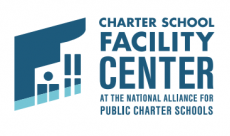A number of long-term and short-term sources are discussed in the Refinancing Options section of the guide. Schools can reach out to any of these sources and discuss their loan request with them. Some will have application forms to complete; others will have due diligence checklists for required documents and information. Alternatively, schools can issue a request for proposals for refinancing if there are multiple providers in the preferred refinancing source (e.g., underwriting firms for bond issuance).
Solicitation Checklist
No matter the financing source, lenders will want to know about the school, the need it is meeting in the community, its academic program, and its financial health and borrowing needs. Tab 2 of the toolkit provides an initial solicitation checklist for schools. Schools should assemble this information prior to reaching out to lenders. Lenders will have follow-up documents and due diligence requests throughout the process, but having these materials assembled will help expedite any initial screening process.
Sources and Uses Template
Schools will need a general idea of transaction size and the magnitude of necessary financing resources. Begin by estimating uses of funds, primarily the debt that needs to be refinanced at maturity. Schools should also include the cost of any additional facility improvements that they may be considering, such as site expansion or new site development, as well as third-party costs and fees associated with refinancing. Assuming a school is primarily refinancing existing debt or purchasing a facility it has been leasing, third-party costs should be fairly minimal, and schools could include an initial placeholder of $10,000 for environmental and appraisal updates that lenders may require. Financing fees will vary depending on the refinancing source; however, schools can use 2% of the projected refinancing debt amount for preliminary sizing purposes. Schools can also estimate how much equity they can commit to the project, from cash on hand, funds raised from individual donors or corporations, and foundation or government grants. For preliminary purposes, schools can input the difference between the total estimated uses and the identified equity contribution as debt in the sources section of the template. As the refinancing strategy is solidified, schools can revisit and update these figures.
Affordability and Evaluation Worksheet
The next step is to make a preliminary estimate of how much refinancing debt schools can afford. Since schools are refinancing debt or purchasing leased facilities, they need to think about what they are currently spending on facilities and how it has affected their programs. Will refinancing lower the facilities burden or increase it? Will it be affordable over the long term? The benchmarks employed throughout this guide should be kept in mind. At full enrollment, schools should pay no more than 15% of their total revenues on debt service expense and no more than 20% of total revenues on aggregate facilities expense, including the cost of utilities and maintenance, in addition to debt service. These benchmarks should be considered upper limits.
The affordability and evaluation worksheet will help schools determine how much of their existing financial resources they can afford to pay in facilities-related debt service and the maximum amount of debt they should borrow for different financing options. The key school input here is estimated annual revenues in the year of refinancing. This tab is linked to inputs in Tab. 6, Detailed Pro Formas, but schools can input the number directly in this tab as well. Schools will also need to select an annual debt service burden factor, based on their own financial strategies but capped at the maximum benchmark of 15%.
How much a school can borrow depends on the types of financing available. The affordability analysis will calculate the maximum amount of debt a school can afford for different options with different repayment terms. Simply input the estimated amount, term, amortization, and interest rate for the option, and the worksheet will calculate the maximum amount of debt a school can afford based on its revenues and any initial gap it may have to fund with equity. The worksheet then incorporates the estimated equity contribution provided in the sources and uses template to calculate the remaining, or net, financing gap.
A school’s estimated net financing gap is the difference between its refinancing needs (the total uses) and the financial resources that it either has currently at its disposal or expects to be able to borrow (the total sources). A positive number means the school has surplus debt capacity, and a negative number means the school has a remaining financing gap to fill. If the affordability analysis results in a net financing gap, the school will need to find an alternative option that allows it to borrow more affordably, raise additional funds, or revise its uses downward (value engineer or reduce the scope of its planned project) such that the gap is eliminated.
Each refinancing option will have different transaction costs and ancillary financing terms not explicitly addressed in the affordability analysis. Other terms to consider include loan-to-value (LTV) restrictions, guarantee requirements, any penalties for prepayment, and ongoing financial covenant requirements. Schools can compare costs and terms from different lenders by filling in the other parts of this evaluation worksheet and comparing the elements side by side. Having more than one option will help schools negotiate superior terms with any individual lender.
Facilities Environment for Idaho Charter Schools
In addition to operating per pupil funding, charter schools in Idaho receive per pupil facilities revenue through the Charter School Facilities Program, $420 per pupil in 2019-2020, as well as two small per pupil allocations through the State Facilities Funding Program and the School Facilities Maintenance Match Program. In addition, Idaho is one of only four jurisdictions that have statutorily authorized a moral obligation program for charter school facility debt, effectively substituting the state’s credit strength for that of the charter school. One other element of Idaho law merits mention. Under current law, a single entity or obligated group is prohibited from cross-collateralizing debt or otherwise upstreaming financial resources. Each charter school must be independently accountable for its academic, financial and operational outcomes, This statutory prohibition makes it more difficult for Idaho charters with multiple schools to reap the credit and pricing benefits that normally accompany larger school enrollments and associated cash flows.
Related Articles in Undertsanding your Needs:
- Assembling Your Facility Refinancing Team
- Facility Refinancing Guide to Underwriting
- Facility Refinancing: Credit Approval, Rating, and Marketing
- Facility Refinancing Guide to Closing
- Facility Refinancing Guide to the Bond Market
- Facility Refinancing Guide to State Credit Enhancement
- Facility Refinancing Guide to Philanthropically-Enhanced Funds, Equitable Facilities Fund
- Facility Refinancing Guide to the CDFI Bond Guarantee Program
- Facility Refinancing Guide to Banks and Credit Unions
- Facility Refinancing Guide to Community Development Financial Institutions
- Facility Refinancing Guide to Philanthropically-Enhanced Funds, Facilities Investment Funds
- Facility Refinancing Guide to Replacement and Reporting
Related link in Essential Resources:
- Facility Refinancing: Solicitation Checklist
- Facility Refinancing: Sources and Uses Template
- Facility Refinancing: Affordability and Evaluation Worksheet
Legal Disclaimer:
Nothing in this material should be construed as investment, financial, brokerage, or legal advice. Moreover, the facts and circumstances relating to your particular project may result in material changes in the processes, outcomes, and expenses described herein. Consult with your own professional advisors, including your financial advisors, accountants, and attorneys, before attempting to consummate any transaction described in this material.

